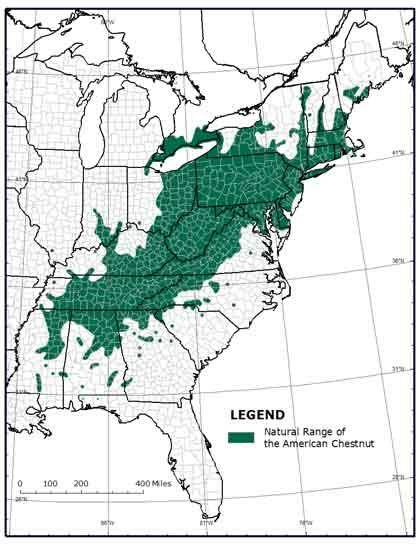


Bryant RedHawk wrote:hua Edwin, so you're shoats will be ready in January?
We like to pick up babies at 12-14 weeks old, when they are fully weaned.
Where are you located, I might be interested in a gilt but I need to be able to make the round trip in a day or two.
Could you pm me a copy of the pedigree?
We have a good Boar and two gilts right now, we won't be breeding until probably January as ours will be old enough at that time.
Thanks.
B. Redhawk





We have two large, fruitful chestnut trees on our homestead.
In the early 20th century a lethal Asian fungus infestation (known as the chestnut blight) swept across native habitat of the American chestnut tree and wiped out about 4 billion American chestnuts. In circa 1925, the fungus reached our ecosystem in western North Carolina killing the American chestnuts here.
Most chestnuts growing now are Chinese chestnuts or hybrids. The Chinese chestnut species has an immunity to the blight. However, the American Chestnut Foundation is using science to seek out and restore blight-resistant American chestnut trees to our biome.
The first option for the American Chestnut restoration project is to locate naturally-resistant all American (not hybrid) trees. Champion trees could save the species. A champion would have a natural immunity to the blight, and would be capable of passing that immunity down to her children through her seeds. Here is an article about the ACF restoration project: Restoring the American Chestnut Tree. Another good piece is Chestnut Champions by Meghan Jordan, TACF, Page 12.
There is only a very slight possibility we have American chestnuts on our homestead. There is an even smaller probability still that our chestnuts are champions. But even the faintest possibility of a champion chestnut tree on our homestead creates a duty to check. That is why we must identify our chestnut trees. We owe it to our ancestry and progeny. Stay tuned.
"According to a traditional French practice, deworming treatments are performed preferably when there is a new moon. The worms are more active at this time and therefore easier to dislodge. On the other hand, Rudolf Steiner, the father of biodynamic agriculture, recommends performing deworming treatments during a full moon."
Drench animals for internal parasites, on an empty stomach with, for example, garlic and cider vinegar. (48 hours before Full Moon)
most parasitic conditions can be addressed best with a natural wormer, used between the new and full moons.
"We can't get lulled into a false sense of security with fecal counts." The most successful assessments collect fecal samples between . . . the new-to-full moon phases, when parasite egg-laying is at its peak. Samples taken between [the full-to-new moon phases] may not show eggs because it may not jibe with a parasite egg-laying cycle. Daily fecals, and quantitative egg counts could perhaps best document this cycle in an individual horse.
